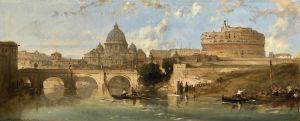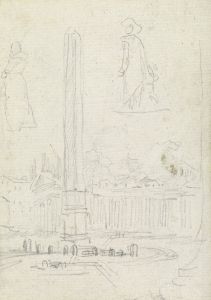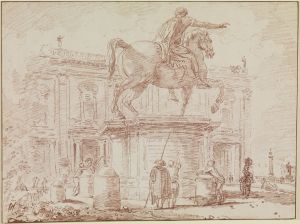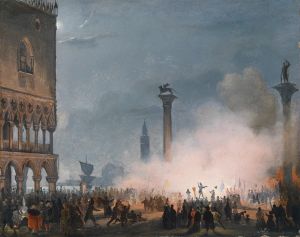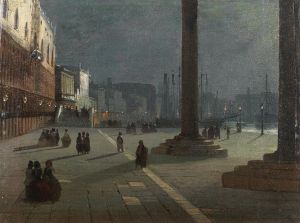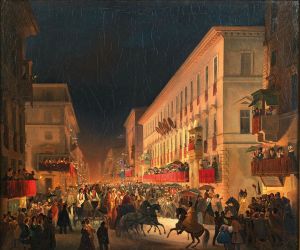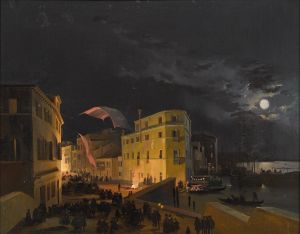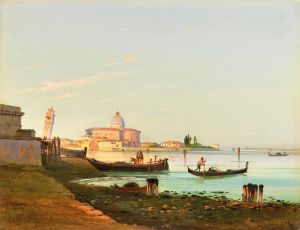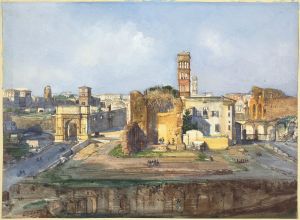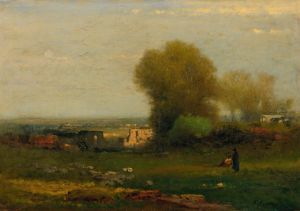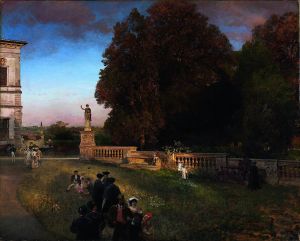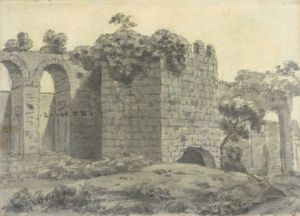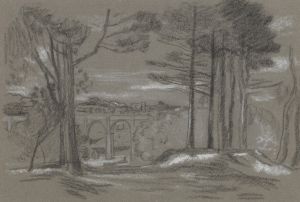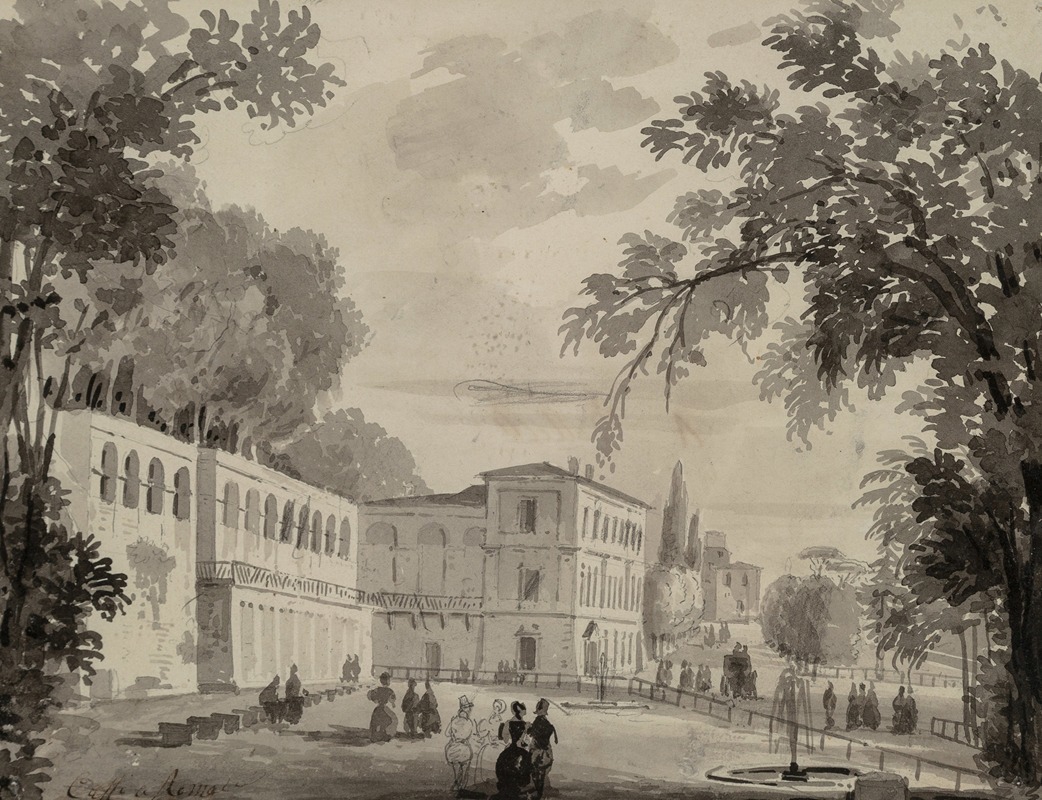
Veduta of the Aqueduct and Aranciera of the Villa Borghese, Rome
A hand-painted replica of Ippolito Caffi’s masterpiece Veduta of the Aqueduct and Aranciera of the Villa Borghese, Rome, meticulously crafted by professional artists to capture the true essence of the original. Each piece is created with museum-quality canvas and rare mineral pigments, carefully painted by experienced artists with delicate brushstrokes and rich, layered colors to perfectly recreate the texture of the original artwork. Unlike machine-printed reproductions, this hand-painted version brings the painting to life, infused with the artist’s emotions and skill in every stroke. Whether for personal collection or home decoration, it instantly elevates the artistic atmosphere of any space.
Ippolito Caffi was an Italian painter known for his vedute, or detailed cityscapes, which captured the essence of various urban landscapes with remarkable precision and atmospheric effects. One of his notable works is "Veduta of the Aqueduct and Aranciera of the Villa Borghese, Rome." This painting exemplifies Caffi's skill in rendering architectural details and his ability to convey the interplay of light and shadow.
The Villa Borghese is a large landscape garden in Rome, containing a number of buildings, museums, and attractions. It is one of the most famous parks in the city and has a rich history dating back to the early 17th century when it was developed by Cardinal Scipione Borghese. The aqueduct depicted in Caffi's painting is part of the Aqua Felix, a late Renaissance aqueduct that was commissioned by Pope Sixtus V in 1585. It was designed to bring water to the higher elevations of Rome, including the area around the Villa Borghese.
The Aranciera, or orangery, within the Villa Borghese, was a structure used for the wintering of citrus trees and other delicate plants. Orangeries were popular in European gardens of the time, serving both practical and aesthetic purposes. They were often designed with large windows to maximize sunlight exposure and were sometimes used as venues for social gatherings.
Caffi's painting captures the serene beauty of the Villa Borghese's landscape, with the aqueduct and orangery serving as focal points. His use of light creates a sense of depth and highlights the architectural features of the structures. The painting is a testament to Caffi's ability to blend natural and man-made elements harmoniously, reflecting the tranquil yet grand atmosphere of the Villa Borghese.
Ippolito Caffi was born in Belluno, Italy, in 1809. He studied at the Accademia di Belle Arti in Venice, where he developed his skills in perspective and architectural painting. Caffi traveled extensively throughout his life, visiting cities such as Rome, Naples, and Constantinople, and his works often reflect his experiences and observations from these travels. His paintings are characterized by their meticulous attention to detail and their ability to capture the unique character of each location.
Caffi's work was well-received during his lifetime, and he participated in several exhibitions. However, his career was cut short when he died in 1866 during the Battle of Lissa, a naval engagement in the Third Italian War of Independence. Despite his untimely death, Caffi left behind a significant body of work that continues to be appreciated for its artistic and historical value.
"Veduta of the Aqueduct and Aranciera of the Villa Borghese, Rome" is a fine example of Caffi's mastery of the veduta genre. It not only showcases his technical skill but also provides a glimpse into the historical and cultural context of 19th-century Rome. Through his art, Caffi offers viewers a window into the past, capturing the timeless beauty of one of Rome's most iconic landscapes.





